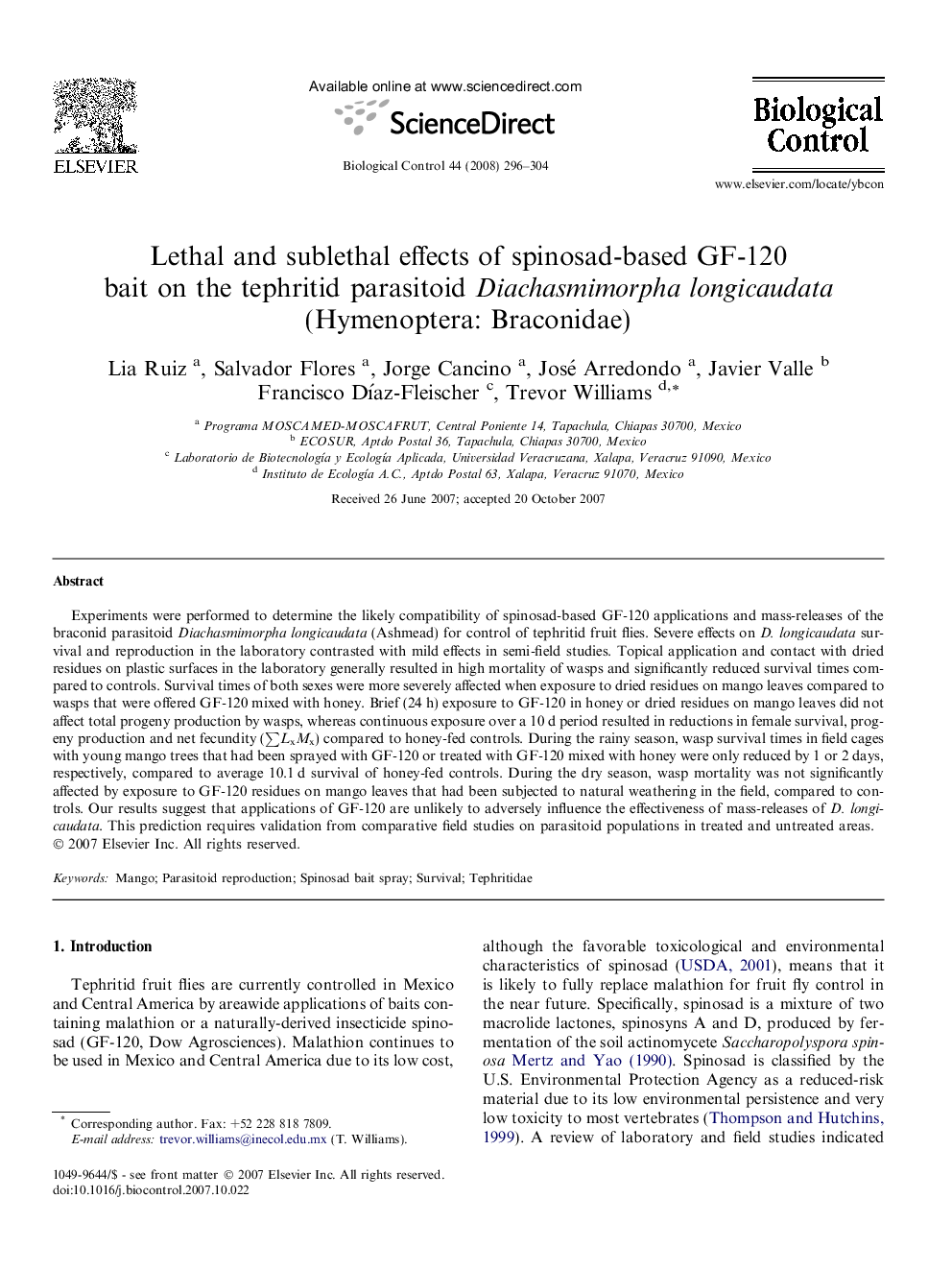| Article ID | Journal | Published Year | Pages | File Type |
|---|---|---|---|---|
| 4505046 | Biological Control | 2008 | 9 Pages |
Experiments were performed to determine the likely compatibility of spinosad-based GF-120 applications and mass-releases of the braconid parasitoid Diachasmimorpha longicaudata (Ashmead) for control of tephritid fruit flies. Severe effects on D. longicaudata survival and reproduction in the laboratory contrasted with mild effects in semi-field studies. Topical application and contact with dried residues on plastic surfaces in the laboratory generally resulted in high mortality of wasps and significantly reduced survival times compared to controls. Survival times of both sexes were more severely affected when exposure to dried residues on mango leaves compared to wasps that were offered GF-120 mixed with honey. Brief (24 h) exposure to GF-120 in honey or dried residues on mango leaves did not affect total progeny production by wasps, whereas continuous exposure over a 10 d period resulted in reductions in female survival, progeny production and net fecundity (∑LxMx) compared to honey-fed controls. During the rainy season, wasp survival times in field cages with young mango trees that had been sprayed with GF-120 or treated with GF-120 mixed with honey were only reduced by 1 or 2 days, respectively, compared to average 10.1 d survival of honey-fed controls. During the dry season, wasp mortality was not significantly affected by exposure to GF-120 residues on mango leaves that had been subjected to natural weathering in the field, compared to controls. Our results suggest that applications of GF-120 are unlikely to adversely influence the effectiveness of mass-releases of D. longicaudata. This prediction requires validation from comparative field studies on parasitoid populations in treated and untreated areas.
